Handmade Stories: Rajvi Mehta
Five young Indian artists, experimenting with forming spaces, silhouettes and textures, speak of the very process of creating in clay and its influence on developing an individualistic worldview and style sensibility
Rajvi Mehta, 31
Textile Consultant and Potter
Bengaluru
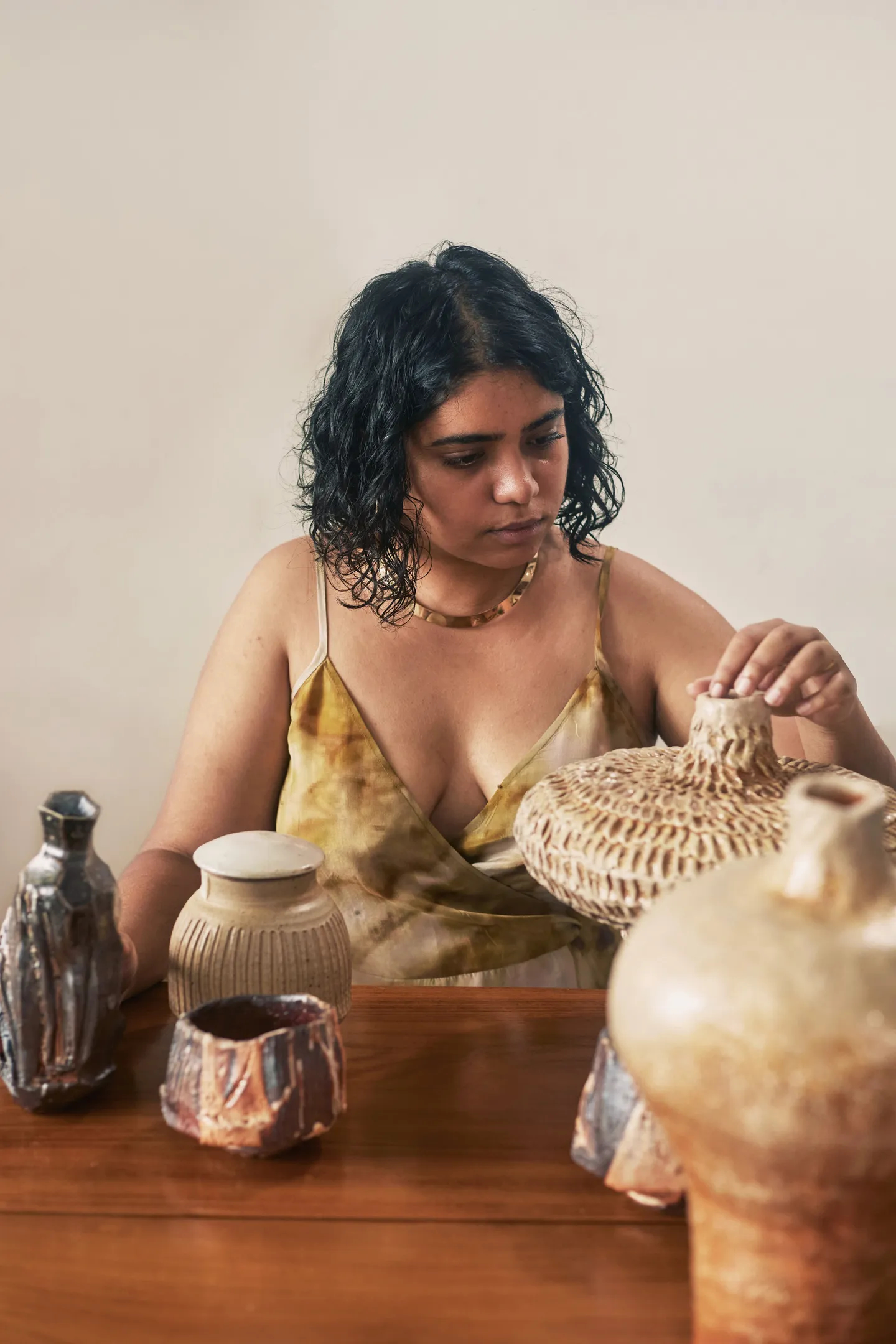
Why ceramics?
Working with tactile materials has always brought me joy. First it was textiles, so I spent five years at the National Institute of Design [NID], Ahmedabad, studying weaving, printing, dyeing, fabric manipulation, surface construction, etc. In 2014, I joined Wari Watai, Bangalore, as a senior textile designer. Towards the end of my four-year tenure, I did a project using stoneware with Minim Design. Working with clay again and the fascinating changes that it goes through from raw to fully fired, prompted me to attempt studio pottery.
I had the opportunity to be trained as a studio potter under Ray Meeker and Deborah Smith at Golden Bridge Pottery in Pondicherry in 2019. I now consult as a textile designer, primarily in the home linen domain, and run a pottery studio, making functional ware.
What is your process of creation, in physical terms?
I like to throw pieces, rather than hand build. I am experimenting with creating a few glazes of my own, but mostly use ready ones. I tried to use what was available when I started my practice. It was a process of what you can do with what you can find. Slowly, I see a style emerging that is pushing me to experiment more in this direction – looking for local clay, raw materials etc.
I love faceting my pieces and am working towards adding more textures to my list of visual treatments. Subtle glazes and simple but functional forms are what I generally lean towards.
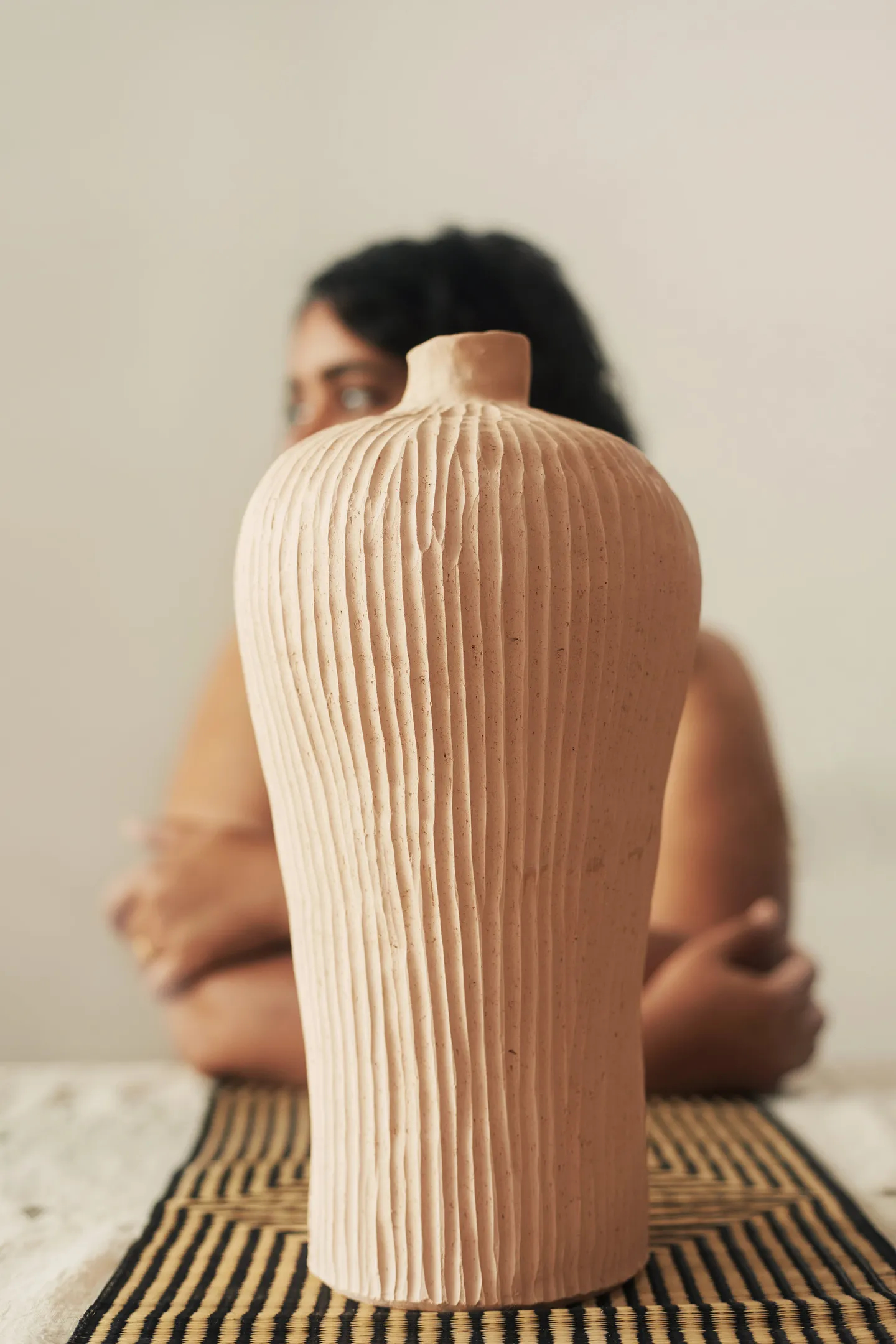
What inspires your shapes and silhouettes? Do you sketch these before you start or go with the flow?
A lot of my inspiration comes from the things that I saw while I was learning. Sometimes, at a chai stall or store, I would see something and think, Hey, I should try making this. I draw out the forms in a book, do a few trials, and see what comes naturally to me when I throw multiples. The sketch becomes a starting point, and a form develops as I keep trying the same thing over and over again. At the moment, I am really enjoying throwing tumblers with wide bottoms.
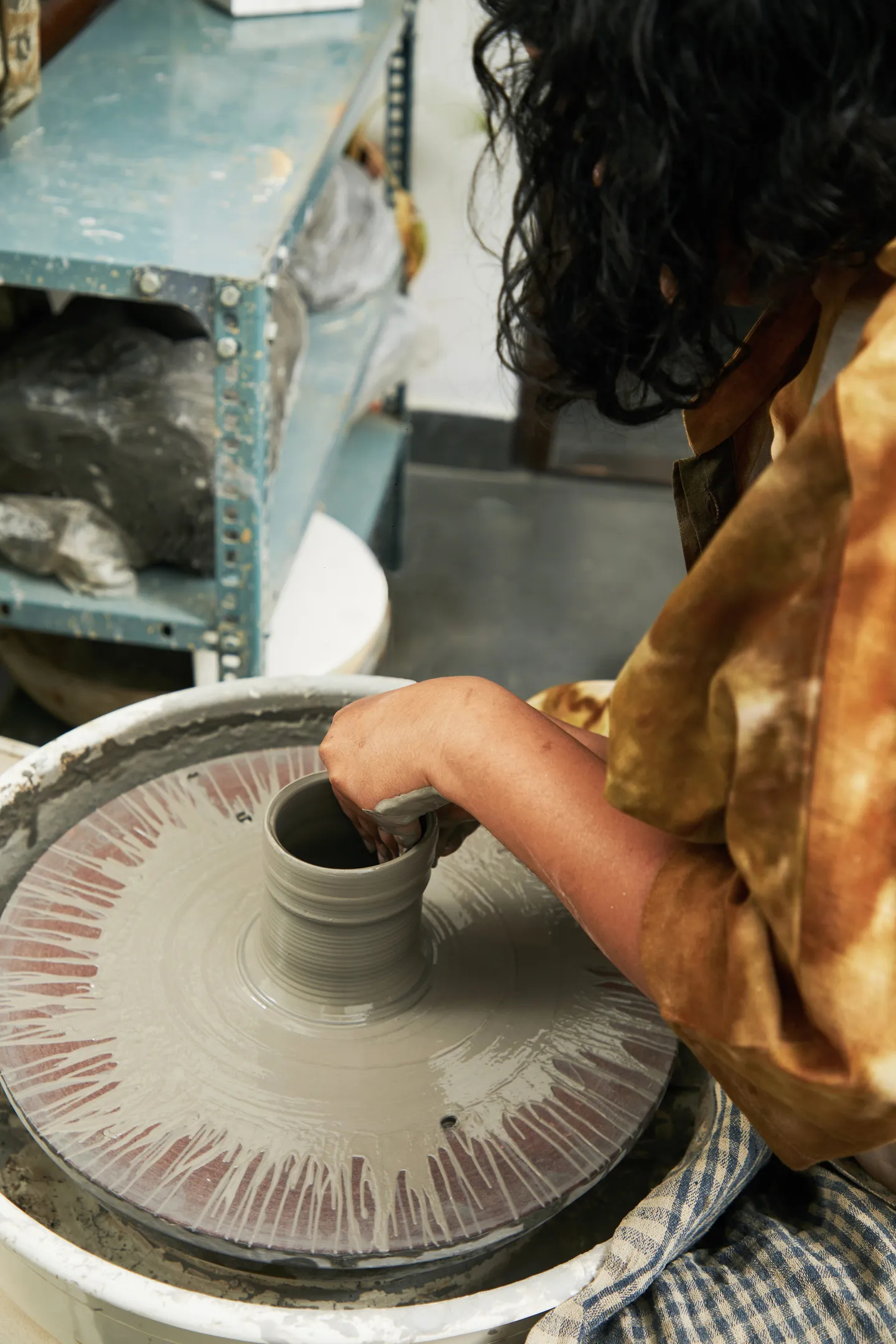
What has the process of creating from clay/mud been like for you?
At Pondicherry, I experienced the journey of an object, the sculpting of a material to make a form. I go back to this constantly, as it is my point of reference, my first training. Fibres can be woven, felted, crocheted and treated to create textures. Clay can be malleable or rigid in a similar fashion, and the parallels between them excite me. Paper, fabric and clay – they all have such a rich purpose, history and close relationship with the hands of the maker.
Did you always have a desire to create, even as a child?
I have realised that when I am not working on client projects in textiles or making pots, I tend to spend time in the garden – repotting, checking for bugs, adding compost…. There are many “home improvement” projects that are constantly in the pipeline – like making macrame hangers for pots or stitching new curtains! I suppose that also comes from watching mum around the house constantly fixing things and enlisting our help as kids.
What role do art and design in general play in your life? Does your work tap into childhood memories in any way?
My mum has been quite an inspiration, along with my grandmum. They taught me at a very young age to knit, crochet, paint, stitch, embroider and generally make things on my own. My dad made sure we travelled almost every year to some new city or country. There, we would visit museums, markets, roadside fairs. My mum would stop to see how an artisan was making his wares, always curious, asking many questions. I suppose her inquisitiveness made me pause and actually pay attention.
What would you normally wear when you work?
I wear the most comfortable everyday clothes like a soft cotton T-shirt and some stretchy pants, with a potter’s apron my mum stitched for me.
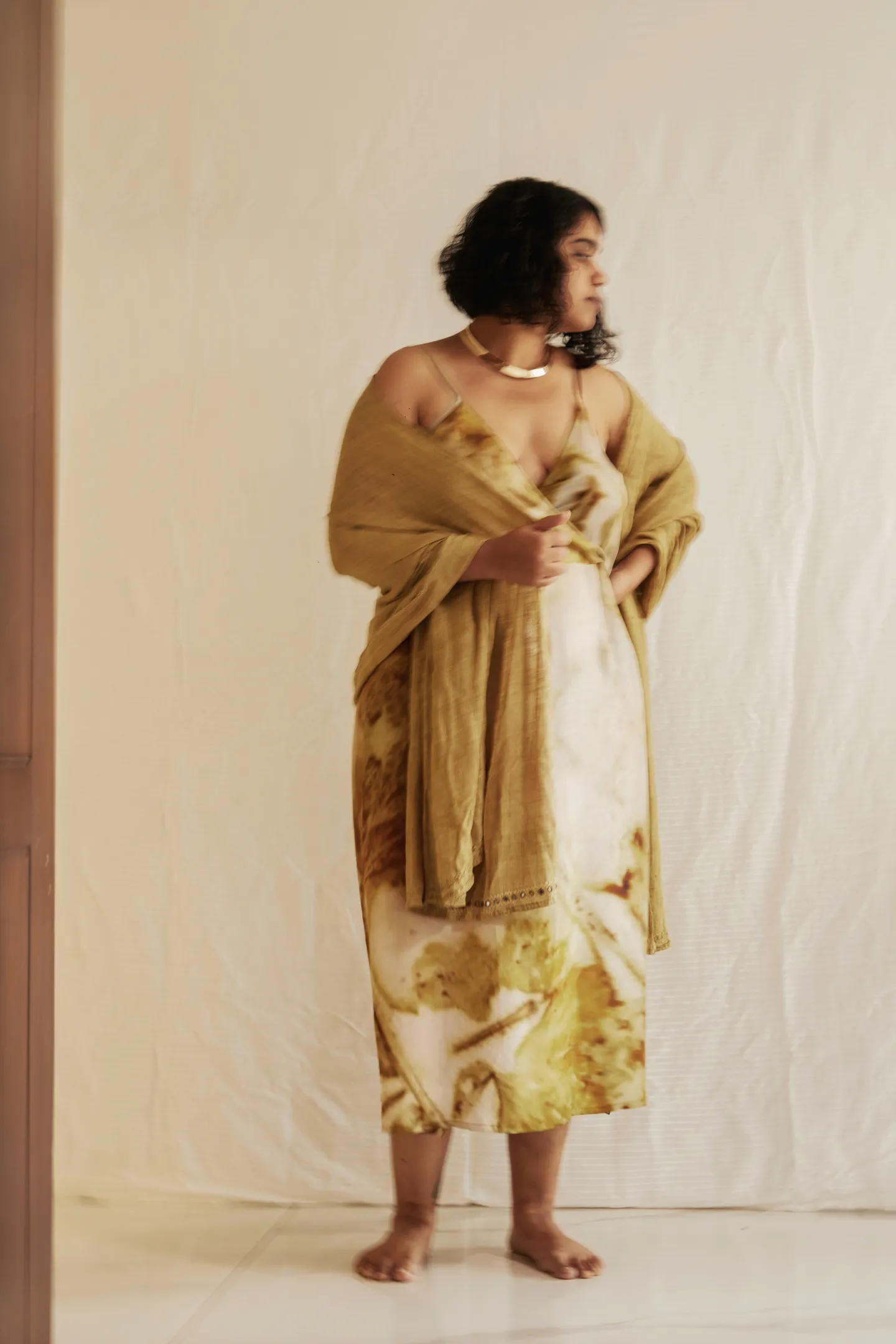
What is your personal style like outside of work? Does your art inform your style in any way?
I guess I have gotten very used to only wearing clothes that I feel completely comfortable in. The lockdown made it easier to stick to this routine. So, you will mostly find me in long skirts or simple cotton dresses. Or pyjamas and T-shirts! Also, considering I work closely with fabrics, I tend to pick up different woven or printed cotton fabrics wherever I go, which I have stitched into simple silhouettes.
Is there any form of traditional Indian ceramic creation that you love? That you gain inspiration from?
One Diwali, I came across a lovely wheel-thrown diya with a glass top. I have tried to take that forward and made my version of a tea light holder. But overall, I feel the need to do a lot more research on the many traditional, historical forms of pottery and sculpture.
Do you have a favourite piece that you have made? Why do you love it more than others?
I attended a workshop where a ceramicist from New Zealand, Elena Renker, showed us how to make pots using the Kurinuki method. A set of bowls I made then have completely changed my perception of what hand-building techniques can achieve. They are light, but have a solidity to them, the contrast being simply beautiful.
Do the pieces always turn out the way you imagined?
Every kiln opening is a surprise. And honestly, at first look I never like any of my pieces. It takes me some time where I sit with it, stare at it, move it around in different settings in the house, see it in different lights, and then it starts to grow on me.
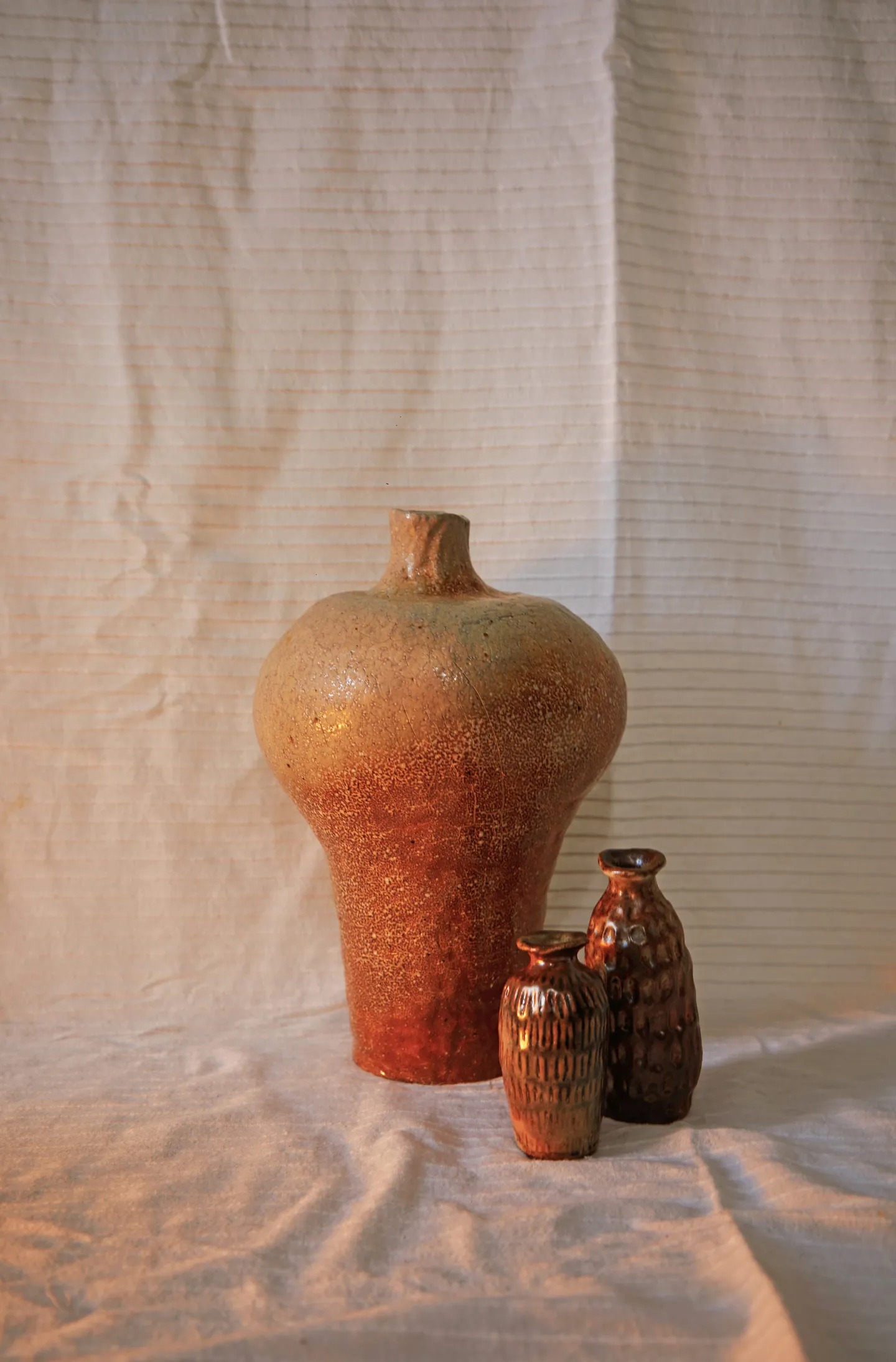
What are you experimenting with at the moment?
I am trying to come up with a workable clay body using broken, fully-fired ceramic ware ground into powder. Fired ceramics do not degrade at all. That is the reason that we discover pottery in archaeological sites. My long-term aim is to use as much local or recycled material in the clay or glazes to reduce the effects this process has on the earth.
What are the emotions that feed your creativity?
I need to be at peace with myself, body and mind, to be able to create. It’s one of the reasons I have taken up gardening, growing my own food, and yoga. I make my own kombucha and keep trying things to improve overall health. For quite some time, I didn’t pay attention to the signs where my body and mind were asking me to slow down, be a little gentle with them. But, well, it’s never too late!
Previous: Puja Rao
Next: Rekha Goyal